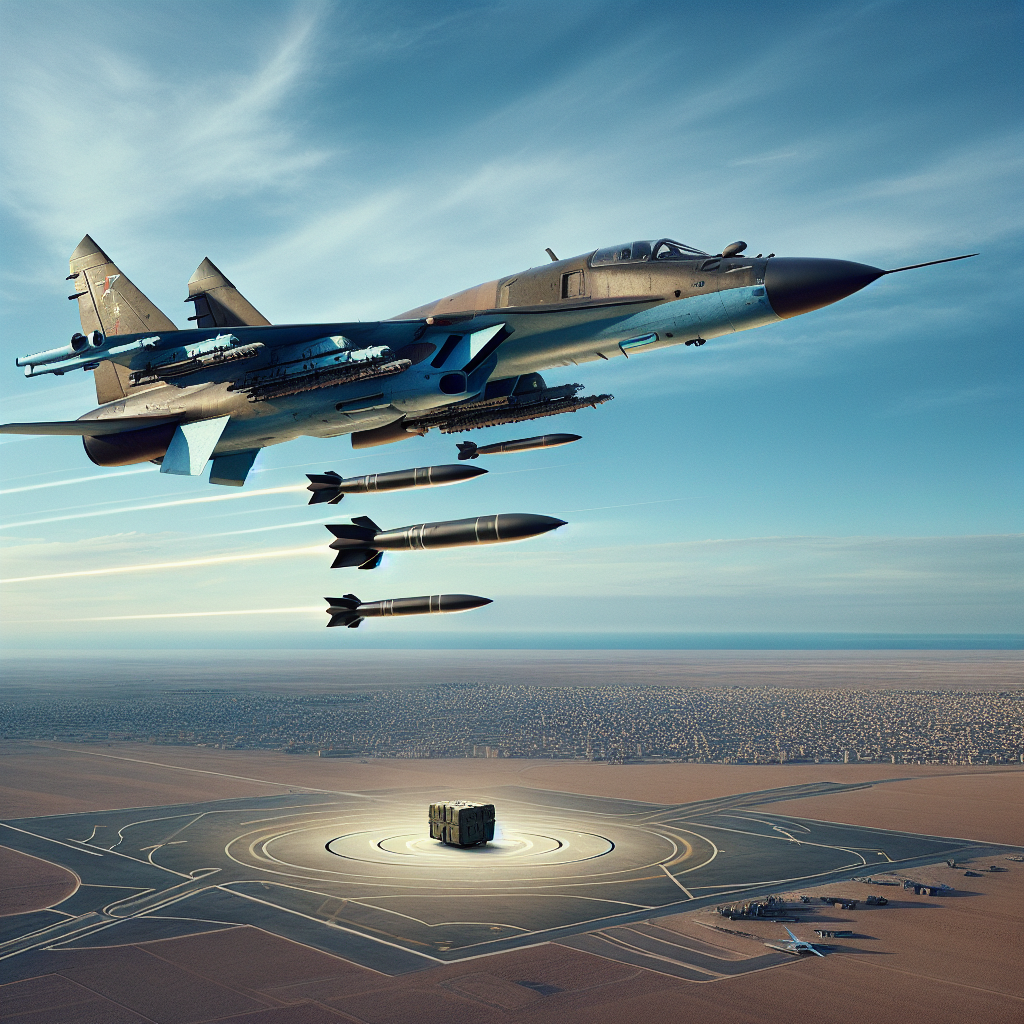Recently, the Ukrainian Air Force released a fascinating video showing Su-25 attack aircraft using French-supplied “Hammer” precision-guided bombs to strike Russian targets. It is well-known that the Ukrainian Air Force operates outdated Russian-made fighter jets, such as the Su-25, which were developed over 50 years ago. So how did Ukrainians manage to integrate Western weapons into Soviet-designed combat aircraft?
The footage originates from the Ukrainian 299th Tactical Aviation Brigade, utilizing Su-25 Frogfoot attack aircraft. The video showcases several Su-25 fighters releasing “Hammer” precision-guided bombs while flying at high altitudes over Ukraine. The aircraft release the bombs in pairs, then rapidly pull up, execute sharp turns, change direction, lower their altitudes, and return back. Some scenes also depict the Su-25s releasing flares during maneuvers to counter Russian air defense missiles. Subsequently, the aircraft descend to safety return.
The Ukrainian Air Force’s reasoning behind this lies in the threats faced by Ukrainian fighter jets on the frontline against various Russian air defense systems like the S-300, S-400, as well as mobile-deployed systems like Buk and Armor. The initial high-altitude flight of Ukrainian planes is to release glide bombs, requiring sufficient height for energy and increased bomb range for target accuracy. After bomb release, the planes swiftly lower their altitudes to evade Russian radars and air defense missiles.
In another video, the Ukrainian Air Force utilized “Hammer” missiles to destroy a Russian military building in the Zaporizhia region. The footage displays the formidable power of the “Hammer” bomb as the building is completely obliterated by the strike.
The “Hammer” precision-guided bomb, known in English as AASM, is a versatile all-weather air-to-ground weapon developed by the French company Safran. The “Hammer” is highly modular, adaptable for various missions and bomb sizes ranging from 125kg to 1000kg, with three variants offering different guidance modes, including inertial and GPS guidance in its base version. Additionally, there are two enhanced models featuring infrared or laser-guided modules for striking moving targets. Introduced in 2007, the “Hammer” bomb entered service with the French Air Force and can be carried by aircraft like the Rafale and Mirage 2000D.
Aside from guidance systems, the “Hammer” offers diverse propulsion options. It can function as a glide bomb like the U.S. JDAM, without propulsion for a straightforward impact, or equipped with a solid-fuel rocket for extended range.
For example, in a video featuring a Ukrainian MiG-29 fighter using “Hammer” bombs in the Belgorod region of Russia, the aircraft’s initial flight is exceptionally low, almost skimming the ground. The plane then abruptly climbs, releases a precision-guided bomb in mid-air, executes a turn, and heads back. Despite the low altitude at bomb release, the rocket-assisted “Hammer” ensures a range of over 20 kilometers. Ukrainian fighters maintain extremely low altitude throughout the flight phase to maximize aircraft security.
When mounted on a 250kg bomb, the “Hammer” boasts an impressive range of up to 75 kilometers. This capability is crucial for the Ukrainian Air Force as it permits targeting beyond defended territories. The current “Hammer” bombs used by Ukraine lack infrared or laser guidance, likely due to France supplying near-expiry stockpiles and potential compatibility issues with Soviet-style aircraft (e.g., Su-25 and MiG-29). Pre-loaded GPS coordinates offer a more convenient way for bomb deployment compared to the complexity of infrared or laser guidance.
In October last year, France announced plans to deliver 600 “Hammer” precision-guided bombs to Ukraine by the end of 2024. These guided bombs primarily stem from France’s aging inventory and would have to be disposed of if not provided to Ukraine, making efficient reutilization imperative.
After supplying Ukraine with “Hammer” precision-guided bombs, France began integration onto Su-25 attack aircraft. In June this year, the Ukrainian Air Force successfully confirmed incorporating the French “Hammer” onto the Su-25, and the MiG-29 fighters have also been equipped with this weapon. While the original mounting racks of the MiG-29 don’t perfectly match the “Hammer” bombs, clever Ukrainian engineering managed to seamlessly integrate them.
This mounting system resembles the one used by Ukrainian MiG-29s for U.S.-supplied JDAM glide bombs. Before bomb release, Ukrainian fighters can transmit GPS data to guide the bomb accurately.
Recent information reveals Ukraine has innovatively modified Soviet weaponry by installing auxiliary devices inside cockpits similar to iPads or tablets to control Western-supplied precision-guided bombs. Although not the most high-tech solution, this approach effectively enables Ukraine to utilize advanced Western weapons on antiquated Russian aircraft.
A few years back, the U.S. and Western nations hesitated to provide Ukraine with advanced guided bombs, questioning their compatibility with aging Russian-made aircraft. Even Russia doubted Ukraine’s capability to deploy these weapon systems onboard Soviet-designed jets. However, Ukraine’s adaptive and resourceful approach has demonstrated the effective utilization of these weapons to their fullest potential.
Many previous assumptions made by the U.S. and Western countries were self-limiting. If these nations had earlier equipped Ukraine with advanced weaponry, the outcome on the Russian-Ukrainian battlefield could have been vastly different.
Subscribe to YouTube Channel:
https://www.youtube.com/channel/UCbH3tDcNAnptPO_EJytXm2g?sub_confirmation=1
Subscribe to GJW Channel:
https://www.ganjingworld.com/channel/1eiqjdnq7go7Rbr3gcLeMtv0n13p0c
Subscribe to Instagram:
https://www.instagram.com/tansuoshifen
Donate:
https://donorbox.org/tssf

